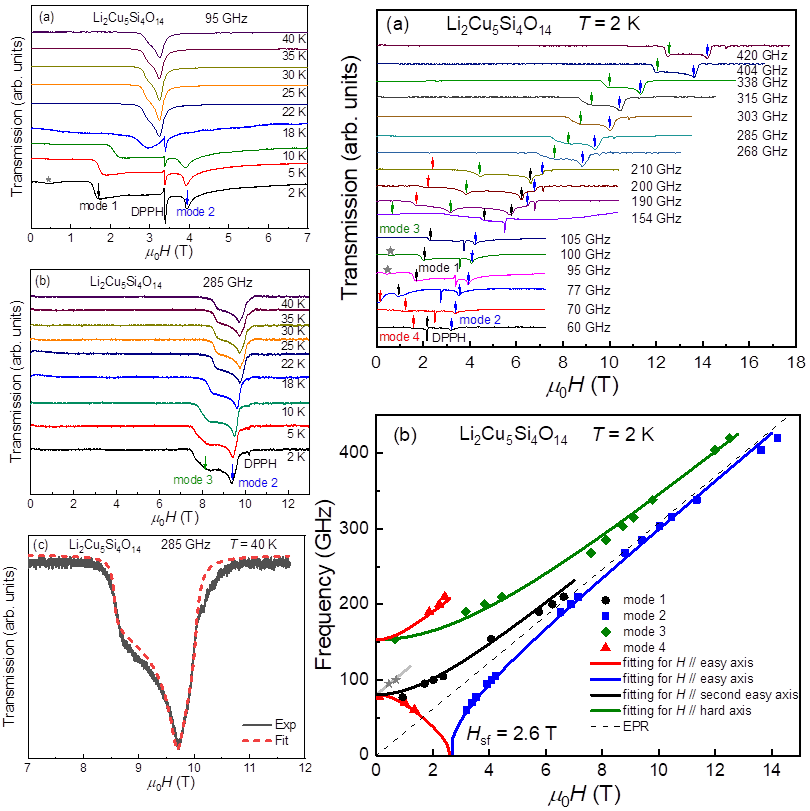
Temperature and magnetic field dependencies of the ESR spectra as well as the frequency-field (f-H) relations.
Background
One-dimensional antiferromagnetic systems have attracted great attention due to exotic magnetic ground state. Spin clusters are another type of low-dimensional antiferromagnetic systems. When the clusters are coupled to form a cluster chain, new magnetic behaviors may appear.Recently, Li2Cu5Si4O14 was reported as a dimer-trimer chain compound. However, the susceptibility and specific heat data showed that the compound is ordered at TN= 22 K.
What we discover?
In this work, we carried out high magnetic-field magnetization and ESR measurements for Li2Cu5Si4O14.Our frequency-dependent ESR spectra at 2 K reveal the development of two collinear antiferromagnetic sublattices with biaxial anisotropy, which is quite unusual because Li2Cu5Si4O14 contains five sublattices.
Why is this important?
According to our ESR results, Li2Cu5Si4O14 is three-dimensionally ordered and its magnetism might be described by pseudo-two-sublattice model composed of antiferromagnetically coupled dimer-trimer groups (↑↑, ↑↓↑) and (↓↓, ↓↑↓). Our study provides new insight into the magnetism of cluster-based spin chains.
Why did we need WHMFC?
The high-field high-frequency ESR facility developed in the WHMFC was used to observe theantiferromagnetic resonances, which is not possible for low-field EPR.The high-field magnetization up to 55 T was measured to examine the possible magnetization plateaus in the dimer and trimer.
Who did the research?
X. P.Jin,1Z. W. Ouyang,1X.C.Liu,1T. T. Xiao,1J. J. Cao,1Z. X.Wang,1Z. C. Xia,1and W. Tong2
1Wuhan National High Magnetic Field Center & School of Physics, Huazhong University of Science and Technology, Wuhan430074, P. R. China.
2Anhui Province Key Laboratory of Condensed Matter Physics at Extreme Conditions, High Magnetic Field Laboratory, Chinese Academy of Sciences, Hefei 230031, P. R. China.
Acknowledgments
This work was supported by the National Natural Science Foundation of China (Grant Nos. 11874023 andU20A2073) and by the Fundamental Research Funds for the Central Universities (Grant No. 2019kfyXKJC008)
link:https://doi.org/10.1103/PhysRevB.104.174423
